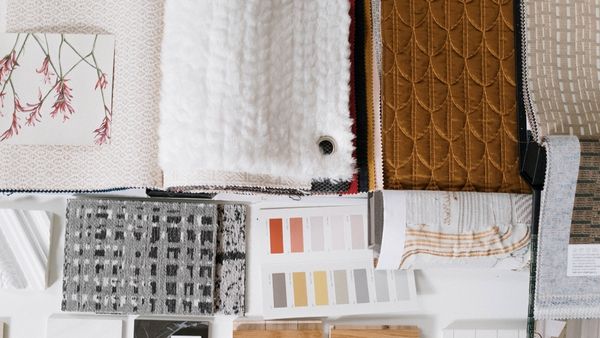Mini irons have been around for a while, but their popularity has been increasing at a rather quick rate, and for good reason too.
So, if you often work on small, intricate areas, you will notice how difficult it is to glide your regular, full-sized iron over them. Enter the mini iron!
A miniature iron allows you to have more control, which means you can easily manoeuvre around tight corners on a hat, bag, or other complicated areas.
Mini Iron Tips
So, how do you get the most out of your mini iron? Why not take a look at 6 carefully constructed tips and tricks on how you can effectively use your mini iron?
6 Mini Iron Tips for Usage
Here is our list of the 6 best tips for using a mini iron, whether it is your first time using a smaller iron, or you are well-versed in using mini irons, we are sure there is something you have probably missed.
1. Eliminating Wrinkles During Sewing Projects
Just like a regular-sized iron, a mini iron does a great job at eliminating stubborn wrinkles from the clothing of all fabrics, despite its small size.

A mini iron comes in handy when reaching tiny seams, with little to no pressure needed. This results in excellent precision when gliding through curved areas in your hood, hat, handbags, and more.
2. Providing Precision for Embroideries and Appliques
Most embroidery and applique pieces are very intricate. Most times, it is difficult to keep the pieces in place and iron at the same time with a regular-sized iron. However, with a mini iron, you won’t encounter such a problem. This is because the tiny surface of the mini iron ensures you tend to your embroidery with the care it deserves without ruining it.

Just like a regular-sized iron, your mini iron also comes with a water tank, so you can spray distilled water before ironing embroidery on stubborn fabrics such as linen. Even better, the size of the mini iron allows you to employ movements such as pressing down, running around corners, and even lifting the iron as opposed to moving back and forth, which tends to ruin the stitches.
3. Perfect for Quilting
Quilters often require a powerful iron that is safe, heats up quickly, and provides a large water tank for steam ironing. This is because they rely mostly on heat to get a crisp, flat-pressed surface. Unfortunately, most quilters assume it’s the weight of the iron that influences the results, which is false.

To enjoy the hobby of quilting, you will need an iron that heats up quickly, which is where mini irons excel. Also, the best mini irons offer good temperature control, which allows quilters to meet the temperature needs of several different fabrics.
4. A Portable Option For Travel
Unfortunately, no means of transportation will completely prevent your clothing from getting wrinkled in your luggage. That’s why a mini iron is a great pick for travel. It’s designed to fit into your bag and takes up minimal space.

This way, you can remove creases and eliminate wrinkles before attending that big board meeting without lugging around a full-sized iron.
5. Small Ironing Projects
While a small iron is designed to glide through corners a traditional iron would find difficult to reach, you will run into trouble using this type of iron for full-size ironing or on a daily basis for extended periods.

Mini irons are for miniature projects – therefore, if you have a large pile of laundry, avoid using a mini iron. Not only will this save you time, but it will prolong the life of your mini iron.
6. Ironing All Types of Fabrics
Lastly, you will be glad to know that mini irons are not picky. They work on fabrics of all types, and opting for one with good temperature control allows you to alternate between several temperature settings.

You can get excellent results regardless of if you’re working with linen, rayon, cotton, rubber, or silk.
What to Look Out For in a Mini Iron
Now, let’s jump into the features that you must look out for when you purchase a mini iron. If the mini iron you have in mind does not possess these features, you may want to reconsider your options.
Comfort
While there are several factors that make an iron useful, a mini iron has to be comfortable under your grip and feasible to manoeuvre around tight edges and corners. This is why mini irons are an ideal pick for people with joint pain or arthritis.
Steam or Dry
This comes down to the type of project you will be working on. A mini iron with space for a water tank is a must-have for quilters. The emission of steam allows them to achieve a well-pressed surface fast.
However, we can’t turn a blind eye to the fact that some projects might require dry ironing. If you can, go for a mini iron that provides a dual ironing option rather than one.
Temperature Control
Good temperature control settings allow your iron to work on a variety of fabrics. Therefore, a “one-size fits all” iron temperature setting will give you a ton of headaches, as you will be unable to alternate its heat level to fit your needs.
Common Issues to Avoid with Mini Irons
Many mini iron users have complained about leakage from the steam tank, which can be caused by several different factors. However, if you notice this issue when ironing, employ the following strategies to minimize it:
● Avoid over-filing the water tank
● Don’t begin ironing before the soleplate heats up
● Use the power-off steam function for ironing at a low temperature
What is the Best Mini Iron?

The Duronic Si2 Mini Compact Iron is one of our favourite mini iron picks. At just 762 grams, it’s compact enough for your travels, while its 13 cm body length ensures it glides into tiny edges and curved seams. With a power rating of 375 watts, it’s sure to heat up quickly, making it perfect for a random sewing project as well as quilting. And how can we forget the ergonomic centred handle, which allows easy grip for both right-handed and left-handed users?

I am a content strategist and the administrator of this website. Professionally, I am an assistant Electronics professor at the University of Chester. I love to read about my profession and have a lot of interest in various home electronics appliances. Freely contact us if you have any queries regarding steam irons and other electronic devices.

